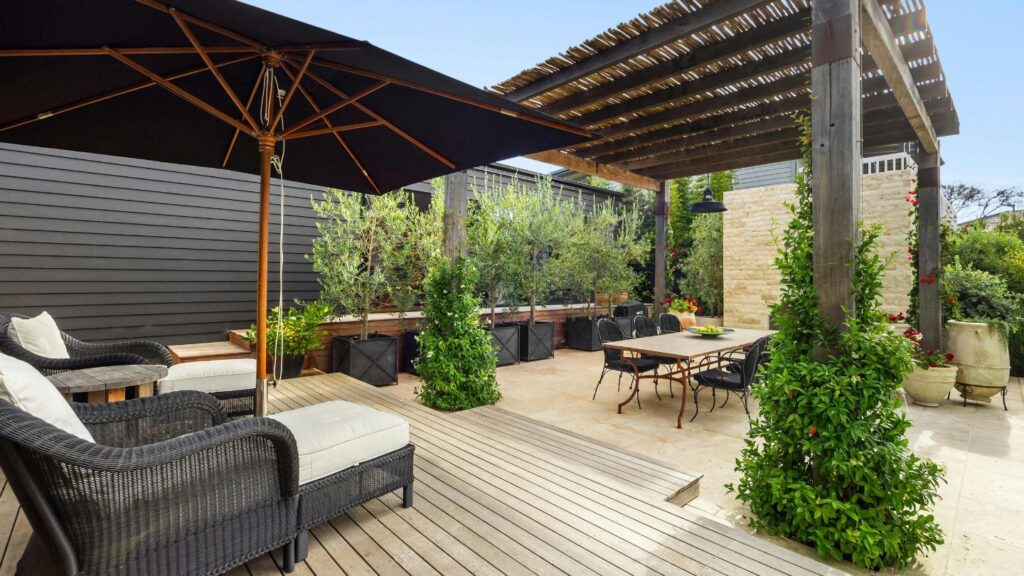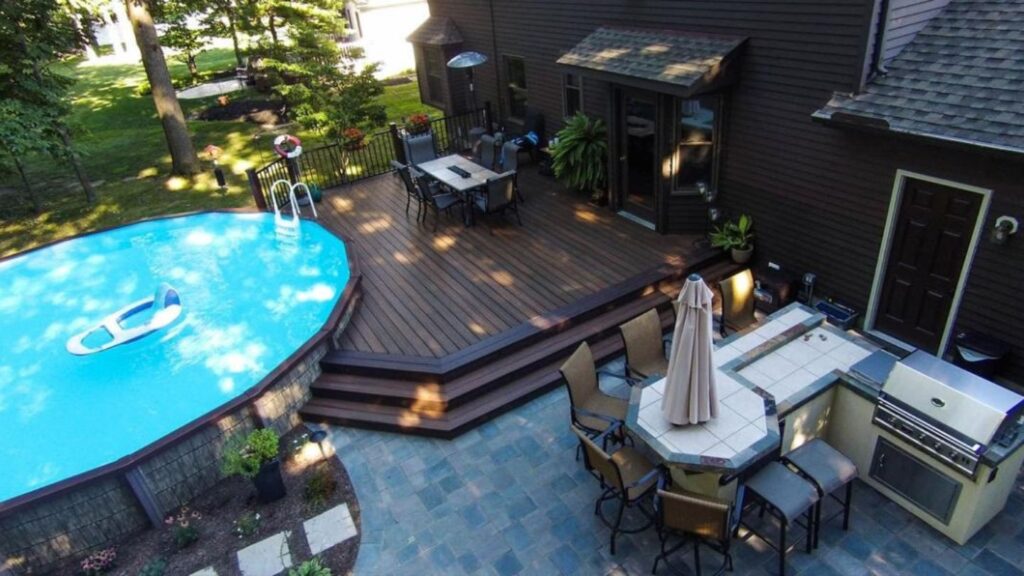Vinyl decking was a fairly successful competitor to traditional wood decks and composite decking boards a couple of decades ago. Made of 100% PVC (chemically known as polyvinyl chloride) vinyl decking boards were hollow with a ribbed internal support structure to give each board strength.
Vinyl decking products were very popular 20 years ago, before composite decking boards were capped with their modern protective plastic shells.
The Pros and Cons of Vinyl Decking
Pros: Vinyl decking did have some strengths when compared to wood or early, non-capped composite deck boards:
- Their hollow structure kept the vinyl boards cooler in the sun;
- The maintenance required for vinyl was substantially lower because early composite boards absorbed everything and were difficult to clean;
- For deck builders, the boards were much lighter, making them easy to work with.
Cons: As with many things in life, vinyl decking also had its drawbacks:
- The texture of the vinyl was a very poor replica of wood grain; some manufacturers simply used straight-line ribbing or even a diamond-plated look;
- Color choice was extremely limited — typically only white, tan, and gray were offered;
- The colors faded to a very light version of its original color.
- The PVC in the vinyl boards expanded and contracted in sun and shade, sometimes making random noises;
- The vinyl squeaked at times when walked on;
- Being hollow, it flexed more underfoot;
- In general, customers felt that it didn’t feel as tight or as sound as a traditional deck would feel.
Thanks to the overwhelming cons, vinyl decking has gone the way of betamax and eight-tracks. As a whole, the vinyl decking market gave way to the capped composites in our Northeast Ohio area. Now that it’s lower maintenance, and because it looks, feels, and wears substantially better, our customers prefer them over vinyl decking.
The Future of Low-Maintenance Decking
Today, however, modern composite decking has surpassed vinyl decking in popularity.
The low-maintenance decking category has gone through quite the transformation in the last 20 years. As new product lines were developed, new terms were introduced that caused some confusion in the marketplace: composite decking, capped composite decking … and aluminum decking was even in the mix back then.
It has been exciting to watch the growth and be a part of the innovation that transpired during this time. We eagerly anticipated the development of the new decking materials that would change the deck building industry for good. In the process, some (like aluminum and vinyl decking) have faded away.
Today, deck builders share a broad consensus that composite decking is the future of the decking industry. Composite decking has matured extensively as a high-performing, long-lasting decking material over the last decade. I have written about composite decking as a broad category quite a bit in my previous posts. To learn more, have a look at come of those articles:
Or just get a free estimate! I’m always happy to help customers choose the right decking materials for their location, aesthetic and budget.




